Unveiling the Thermochromic Magic of VO₂
VO₂ is not just another material; it’s a game-changer in the realm of energy-efficient technologies. With its unique ability to transition from an insulator to a metallic state, VO₂ stands at the forefront of thermochromic innovation.
Harnessing the Critical Temperature for Optimal Energy Control
Our Nano Vanadium Dioxide thin films and composites are engineered to hit that sweet spot – a critical temperature that’s just right for maximizing energy savings in buildings.
Energy Savings and Sustainability with VO₂
Incorporate our Nano Vanadium Dioxide glazing to significantly reduce solar heat gain and boost the energy efficiency of your structures. Experience the dual benefits of warmth in winter and coolness in summer.
Diverse Applications of Nano Vanadium Dioxide
Beyond just buildings, our VO₂ materials are making waves in the creation of smart windows, advanced sensors, and responsive actuators.
Join the revolution in sustainable building technology. Explore our range of Nano Vanadium Dioxide materials and take the first step towards a greener future. Contact us today!
Introduction to Nano Vanadium Dioxide
Nano Vanadium Dioxide (VO2) is a remarkable material known for its unique thermochromic properties, making it a key component in the development of smart materials. With applications spanning from energy-efficient coatings to advanced electronics, Nano Vanadium Dioxide plays a vital role in shaping the future of sustainable technologies.
Key Applications of Nano Vanadium Dioxide
Smart Windows and Energy-Efficient Coatings
Nano Vanadium Dioxide is widely used in smart windows due to its ability to change its optical properties in response to temperature variations. As the temperature increases, the material transitions from an insulator to a conductor, altering the amount of infrared light passing through. This property makes Nano VO2 an ideal candidate for energy-efficient coatings in buildings, reducing the need for air conditioning and heating.
Thermochromic Devices for Smart Materials
The thermochromic properties of Nano Vanadium Dioxide are utilized in various smart materials. When exposed to specific temperature ranges, VO2 changes its color, making it a popular choice for temperature-sensitive applications. This material is used in smart textiles, automotive temperature controls, and energy-efficient devices, helping to regulate heat and improve energy usage.
Infrared Optical Switching and Smart Sensors
Nano Vanadium Dioxide is increasingly used in infrared optical switching and smart sensors. Its ability to change conductivity at precise temperatures enables it to serve as a smart actuator in optical devices, making it a critical material in developing efficient energy storage systems and innovative sensor technology.
Phase Change Materials for Energy Storage
As a phase change material, Nano Vanadium Dioxide helps improve the performance of energy storage systems. It stores and releases heat as it undergoes its phase transition, allowing for more efficient thermal management in renewable energy applications such as solar power and energy storage devices.
Scientific Insights into Nano Vanadium Dioxide
Nano Vanadium Dioxide is known for its ability to undergo a phase transition at a specific temperature (around 68°C). This transition makes it highly desirable for use in applications that require temperature-responsive materials. The nanoparticle synthesis methods for producing Nano VO2 have been refined to ensure uniformity and stability, further enhancing its performance in optoelectronics and smart devices.
Industry-Specific Applications of Nano Vanadium Dioxide
Automotive Temperature Control
Nano VO2’s ability to regulate temperature makes it ideal for use in the automotive industry. It is incorporated into vehicle systems to improve thermal comfort and energy efficiency, especially in electric vehicles.
Construction and Building Materials
In the construction industry, Nano Vanadium Dioxide is used to create smart glass and energy-efficient building materials. The ability of VO2 to respond to temperature fluctuations makes it perfect for use in smart windows, ensuring buildings remain comfortable year-round without excessive energy use.
Aerospace Technology
In aerospace applications, Nano Vanadium Dioxide is used for temperature regulation in critical components. Its ability to undergo phase transitions helps maintain stable temperatures in spacecraft and aircraft, ensuring system efficiency and safety.
Product-Oriented Applications and Market Insights
Nano Vanadium Dioxide Powder Suppliers
The demand for Nano Vanadium Dioxide powder is rising as industries increasingly recognize its potential. Leading suppliers offer high-quality VO2 powder tailored for various applications, from infrared coatings to thermochromic systems.
Nano Vanadium Dioxide Coatings for Glass
Nano Vanadium Dioxide coatings are applied to glass for enhanced thermal insulation. These coatings adjust to temperature changes, providing buildings with energy-efficient windows that help reduce reliance on heating and cooling systems.
The Future of Nano Vanadium Dioxide
As research and development in Nano Vanadium Dioxide continues, its applications are set to expand across multiple industries, from smart electronics to sustainable energy solutions. By leveraging its unique properties, Nano VO2 is poised to become a cornerstone of next-generation energy-efficient technologies and smart materials.
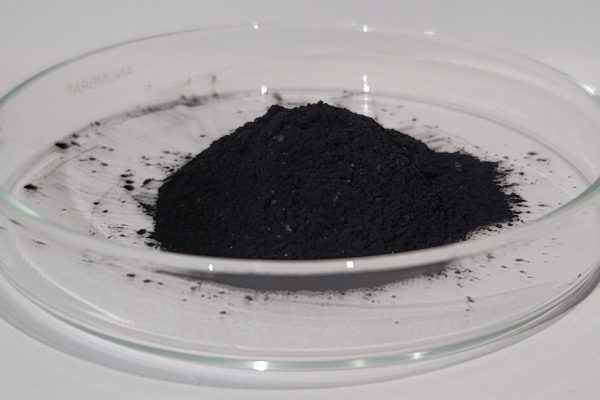
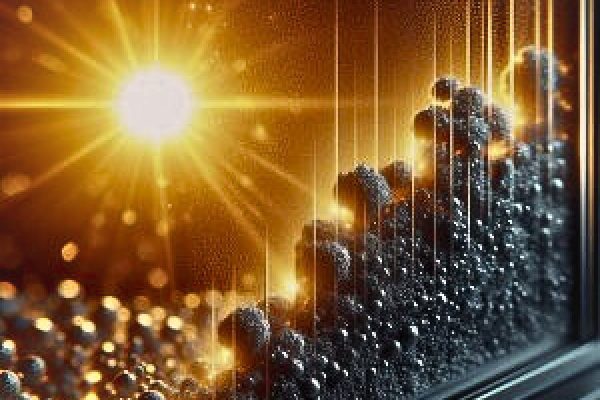
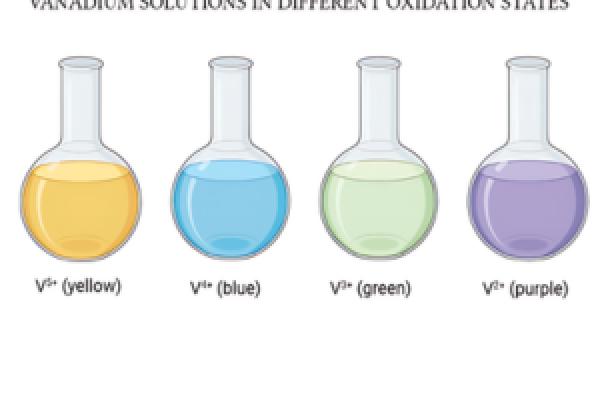
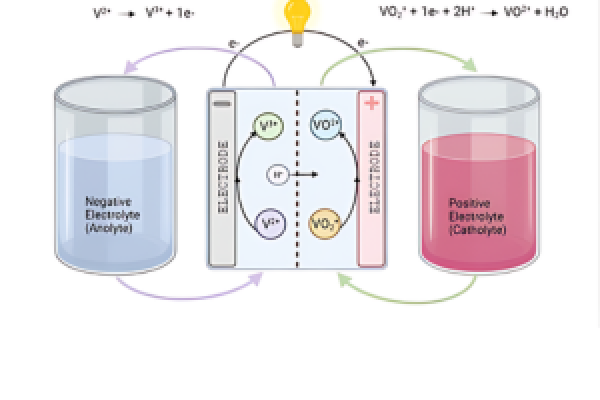
Nano Vanadium Dioxide (VO₂) holds immense promise for cutting-edge technologies. Among its myriad applications, one stands out: energy-efficient glazing for windows and glass facades.
Key Points:
Thermochromic Properties: VO₂ exhibits fascinating thermochromic behavior. At room temperature, it remains in an insulating state (monoclinic phase). However, as temperatures rise, it undergoes a metal-insulator transition (MIT) and becomes metallic (rutile phase).
Critical Temperature: Above a certain critical temperature near room temperature, Nano Vanadium Dioxide thin films and nanoparticle composites selectively transmit less solar energy. This property makes them ideal for controlling heat gain in buildings.
Energy Savings: By incorporating Nano Vanadium Dioxide based glazing, structures can reduce solar heat gain during hot periods, enhancing energy efficiency. Conversely, during colder months, the material allows solar energy to pass through, contributing to passive heating.
Applications: Beyond buildings, Nano Vanadium Dioxide finds applications in smart windows, sensors, and actuators.
As a leading manufacturer, we specialize in high-quality Nano Vanadium Dioxide materials. Explore our offerings and join us in shaping a sustainable future!
This implies that the demand on energy-guzzling air conditioner is lowered. The transmittance of visible light, on the other hand, is not influenced by temperature to a corresponding degree.
IUPAC Name: Vanadium (IV) oxide
Other names: Dioxovanadium
CAS No.: 12036-21-4
Molecular Formula: VO2
Molecular Weight: 82.94 g/mol
| No. | Tests | Specifications |
| 1 | Appearance | Dark, black-blue powder. |
| 2 | Phase | Monoclinic |
| 3 | X-Ray Diffraction | Strongest diffraction at 2θ = 27.80 |
| Microstructure shows nanoparticles in the range of 100-300 nm. | ||
| 4 | Solubility in water | Insoluble |
| 5 | Density (g/ cm3) | Approx. 4.56 |
| 6 | Flash point | Non-flammable |
| 7 | Moisture Content | Nil |
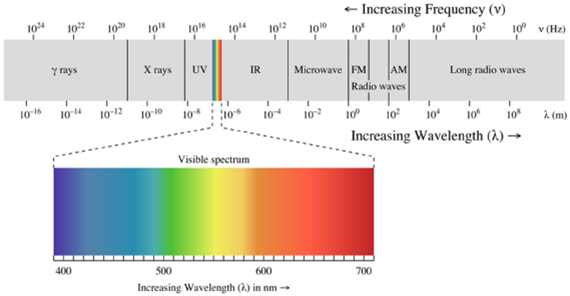
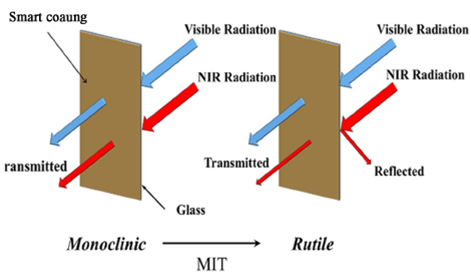

Nano Vanadium Dioxide (VO₂): Revolutionizing Energy-Efficient Glazing
Nano Vanadium Dioxide (VO₂) holds immense promise for cutting-edge technologies. Among its myriad applications, one stands out: energy-efficient glazing for windows and glass facades.
Key Points:
Thermochromic Properties: VO₂ exhibits fascinating thermochromic behavior. At room temperature, it remains in an insulating state (monoclinic phase). However, as temperatures rise, it undergoes a metal-insulator transition (MIT) and becomes metallic (rutile phase).
Critical Temperature: Above a certain critical temperature near room temperature, VO₂ thin films and nanoparticle composites selectively transmit less solar energy. This property makes them ideal for controlling heat gain in buildings.
Energy Savings: By incorporating VO₂-based glazing, structures can reduce solar heat gain during hot periods, enhancing energy efficiency. Conversely, during colder months, the material allows solar energy to pass through, contributing to passive heating.
Applications: Beyond buildings, VO₂ finds applications in smart windows, sensors, and actuators.
As a leading manufacturer, we specialize in high-quality VO₂ materials. Explore our offerings and join us in shaping a sustainable future!
Nano Vanadium Dioxide (VO₂): Revolutionizing Energy-Efficient Glazing
Nano Vanadium Dioxide (VO₂) holds immense promise for cutting-edge technologies. Among its myriad applications, one stands out: energy-efficient glazing for windows and glass facades.
Key Points:
Thermochromic Properties: VO₂ exhibits fascinating thermochromic behavior. At room temperature, it remains in an insulating state (monoclinic phase). However, as temperatures rise, it undergoes a metal-insulator transition (MIT) and becomes metallic (rutile phase).
Critical Temperature: Above a certain critical temperature near room temperature, VO₂ thin films and nanoparticle composites selectively transmit less solar energy. This property makes them ideal for controlling heat gain in buildings.
Energy Savings: By incorporating VO₂-based glazing, structures can reduce solar heat gain during hot periods, enhancing energy efficiency. Conversely, during colder months, the material allows solar energy to pass through, contributing to passive heating.
Applications: Beyond buildings, VO₂ finds applications in smart windows, sensors, and actuators.
As a leading manufacturer, we specialize in high-quality VO₂ materials. Explore our offerings and join us in shaping a sustainable future!
Cutting-Edge Research on VO₂ Nanostructures
Recent advancements in VO₂ nanostructures have opened up new avenues for research and development. State-of-the-art fabrication methods have led to the creation of thin films and low-dimensional structures (LDSs) that are integral to the next generation of electric and optical devices
The Phase-Transition Phenomenon of VO₂
The metal-insulator transition (MIT) in VO₂ is a subject of intense study due to its rapid and reversible nature. Understanding the underlying mechanism—be it lattice distortion or electron correlations—is crucial for harnessing VO₂’s full potential.
Innovations in VO₂ Applications
Beyond smart glazing, VO₂’s unique properties are being leveraged in areas such as adaptive camouflage, thermal management systems, and even in wearable technology. These innovations are paving the way for smarter, more responsive materials.
VO₂ in Environmental Control
Nano Vanadium Dioxide’s ability to regulate temperature can significantly reduce the carbon footprint of buildings. It’s not just about energy savings; it’s about creating a sustainable environment for future generations
Stay ahead of the curve with our Nano Vanadium Dioxide solutions. Whether you’re looking to enhance your product’s performance or contribute to a sustainable future, we have the expertise and materials you need. Discover more on our website!
Introduction to Nano Vanadium Dioxide
Nano Vanadium Dioxide (VO2) is rapidly gaining attention for its unique properties, including its thermochromic behavior and phase transition capabilities. From smart devices to advanced construction materials, Nano VO2 is shaping the future of energy-efficient technologies and smart materials across various industries.
Nano Vanadium Dioxide Thin Films for Smart Devices
Nano VO2 thin films are at the forefront of smart device innovations, providing adaptive control over the device’s temperature. These films alter their conductivity in response to temperature changes, making them ideal for applications in temperature-sensitive smart gadgets.
Nano Vanadium Dioxide as a Smart Material for Wearables
Nano Vanadium Dioxide’s thermochromic properties are harnessed in the creation of smart wearables. The material reacts to temperature fluctuations, providing better control over comfort and performance in wearables like smart clothing and health-monitoring devices.
High-Efficiency Nano Vanadium Dioxide for Temperature Control
Nano VO2 is a leader in high-efficiency temperature control systems. Its ability to shift from an insulator to a conductor at specific temperatures makes it ideal for regulating heat in both consumer electronics and industrial machinery.
Role of Nano Vanadium Dioxide in Building Automation
Building automation systems benefit greatly from Nano VO2’s ability to change its optical properties with temperature variations. Integrated into smart windows, Nano VO2 helps control the heat and light entering a building, contributing to energy efficiency and cost savings.
Nano Vanadium Dioxide for Sustainable Construction Materials
As demand for sustainable construction materials grows, Nano VO2 is playing a crucial role. It is used in energy-efficient windows and eco-friendly coatings, offering better thermal insulation while reducing the need for artificial heating or cooling.
Advanced Nano Vanadium Dioxide for Energy Conservation
Advanced formulations of Nano VO2 are enhancing energy conservation in various sectors. This material helps optimize energy usage in devices and renewable energy technologies, ensuring that energy is utilized efficiently while reducing environmental impact.
Vanadium Dioxide Nanoparticles in Temperature-Sensitive Coatings
Nano VO2 nanoparticles are being used in temperature-sensitive coatings, enabling real-time temperature management in applications like automotive glass, smart windows, and protective coatings in electronics.
Nano Vanadium Dioxide in Flexible Electronics
In the rapidly expanding field of flexible electronics, Nano VO2 is enhancing wearable tech and bendable displays. The material’s ability to undergo phase transitions enables it to regulate temperature in flexible electronics, providing more efficient performance.
Role of Nano Vanadium Dioxide in Optical Switching Applications
Nano VO2 is crucial in optical switching applications, where its ability to control light transmission in response to heat makes it a key material in advanced optical systems, smart glasses, and optical communication technologies.
Nano Vanadium Dioxide for Heat Management Systems
Nano VO2 is integral in heat management systems. Its unique properties allow it to absorb and dissipate heat efficiently, making it ideal for use in high-performance electronics, solar panels, and thermal insulation.
Nano Vanadium Dioxide in Consumer Electronics
Nano VO2 is widely used in consumer electronics, particularly in smartphones and laptops, where it helps regulate temperature and improve device longevity by preventing overheating.
Nano Vanadium Dioxide in Smart Home Technology
Nano VO2 is an essential material in smart home technology, being incorporated into smart thermostats and temperature-regulating windows to enhance home automation and energy efficiency.
Nano Vanadium Dioxide for High-Performance Solar Panels
Nano VO2 enhances solar panel performance by controlling the temperature, ensuring that solar cells remain efficient even in extreme conditions. This property makes it ideal for next-generation solar technologies.
Nano Vanadium Dioxide in Medical Devices for Temperature Monitoring
In medical devices, Nano VO2 is used for precise temperature monitoring. Its phase transition behavior is leveraged in creating advanced temperature sensors for devices such as wearable health monitors.
Nano Vanadium Dioxide in Defense Technology
Nano VO2’s ability to regulate heat makes it ideal for defense applications, particularly in heat-sensitive military equipment and thermal management in combat gear.
Nano Vanadium Dioxide in Energy-Efficient Automotive Parts
Nano VO2 is used in energy-efficient automotive parts. It improves thermal management systems and helps reduce energy consumption, particularly in electric vehicle batteries and energy storage components.
Nano Vanadium Dioxide in Smart Packaging Materials
Nano VO2 is being incorporated into smart packaging materials to create temperature-responsive packaging for sensitive products like food and pharmaceuticals.
Nano Vanadium Dioxide in Sensors for Industrial Applications
Nano VO2 is employed in industrial sensors for monitoring temperature fluctuations in environments where precise thermal control is critical, such as manufacturing plants and energy systems.
Nano Vanadium Dioxide in Aerospace Thermal Regulation
Aerospace technology uses Nano VO2 in thermal regulation systems for aircraft and spacecraft, where it helps maintain stable temperatures and enhances energy efficiency.
Synthesis of High-Purity Nano Vanadium Dioxide
The synthesis of high-purity Nano Vanadium Dioxide is critical for its effective application in advanced materials. Researchers focus on producing high-quality VO2 nanoparticles to enhance performance in electronics and coatings.
Nano Vanadium Dioxide and Phase Transition Studies
One of the most notable features of Nano VO2 is its phase transition behavior. Research continues to explore how to harness this property for energy storage and smart materials in various fields.
Structural Properties of Nano Vanadium Dioxide
Understanding the structural properties of Nano VO2 is essential for optimizing its performance. These properties include its ability to switch between insulating and conducting states, which is useful for applications like thermal regulation.
Nano Vanadium Dioxide for Thermal Conductivity Enhancement
Nano VO2 is being explored for its potential to enhance thermal conductivity in various systems, improving heat dissipation and energy efficiency in technologies such as cooling systems and electronic devices.
Nano Vanadium Dioxide in Phase Change Energy Storage Systems
Nano VO2 is a promising material for phase change energy storage systems, where it can store and release heat, making it ideal for renewable energy systems and green building solutions.
Nano Vanadium Dioxide Suppliers for Industrial Applications
Leading suppliers offer high-quality Nano Vanadium Dioxide for industrial applications, ensuring that manufacturers have access to reliable materials for creating energy-efficient products and systems.
Nano Vanadium Dioxide for Thermal Coatings and Films
Nano VO2 is used in thermal coatings and films to create temperature-regulating surfaces. These coatings are crucial in energy-efficient buildings and advanced electronics.
Nano Vanadium Dioxide Powder for Energy Applications
Nano VO2 powder is essential in applications like solar energy, where its thermal management properties help improve energy efficiency and system performance.
Nano Vanadium Dioxide Price Per Gram
The price per gram of Nano Vanadium Dioxide can vary based on the purity and form (powder or thin films), making it an important consideration for businesses looking to integrate it into their products.
Nano Vanadium Dioxide Coatings for Automotive Windows
Nano VO2 is applied as a coating on automotive windows, allowing vehicles to regulate internal temperatures and improve fuel efficiency and passenger comfort.